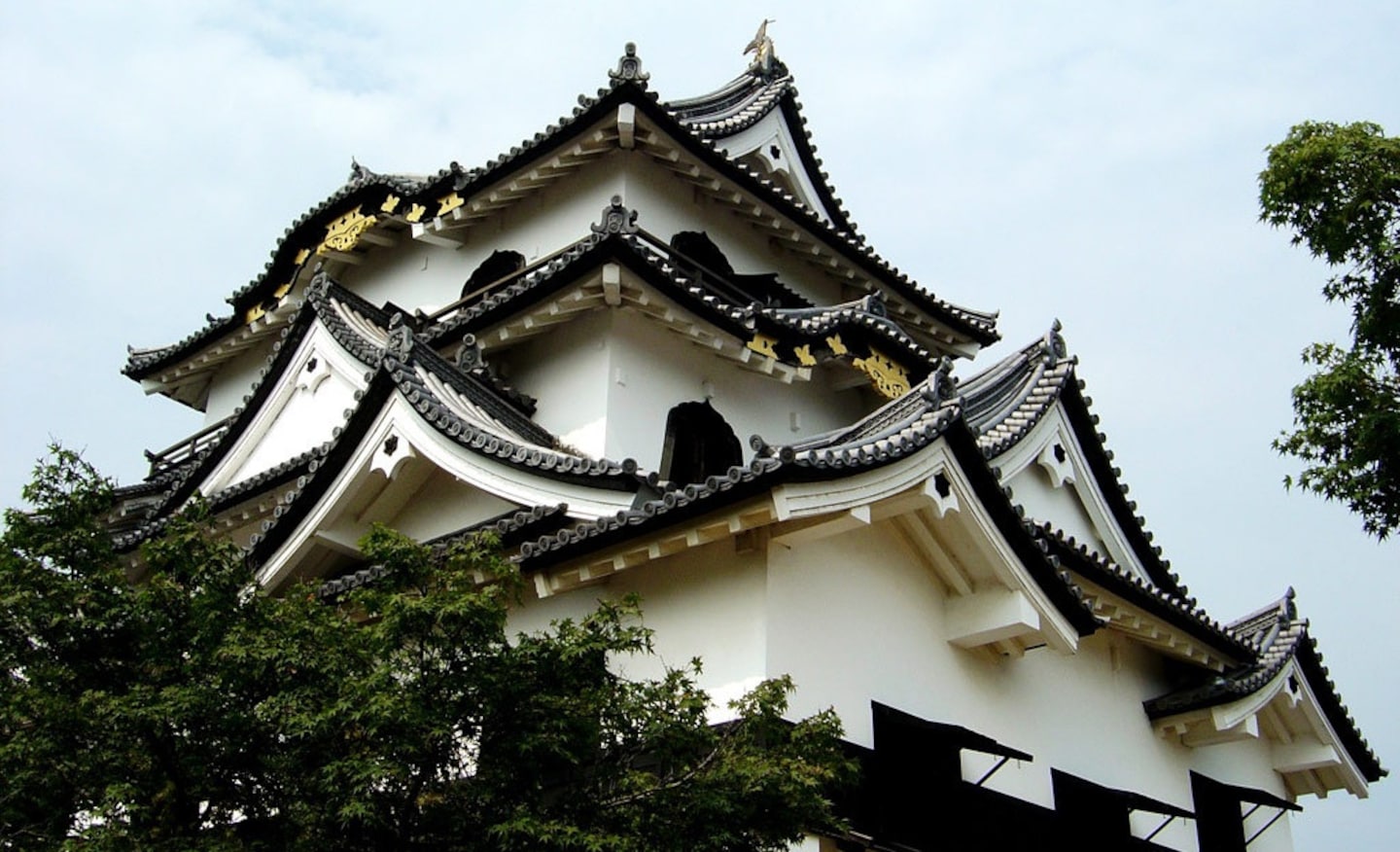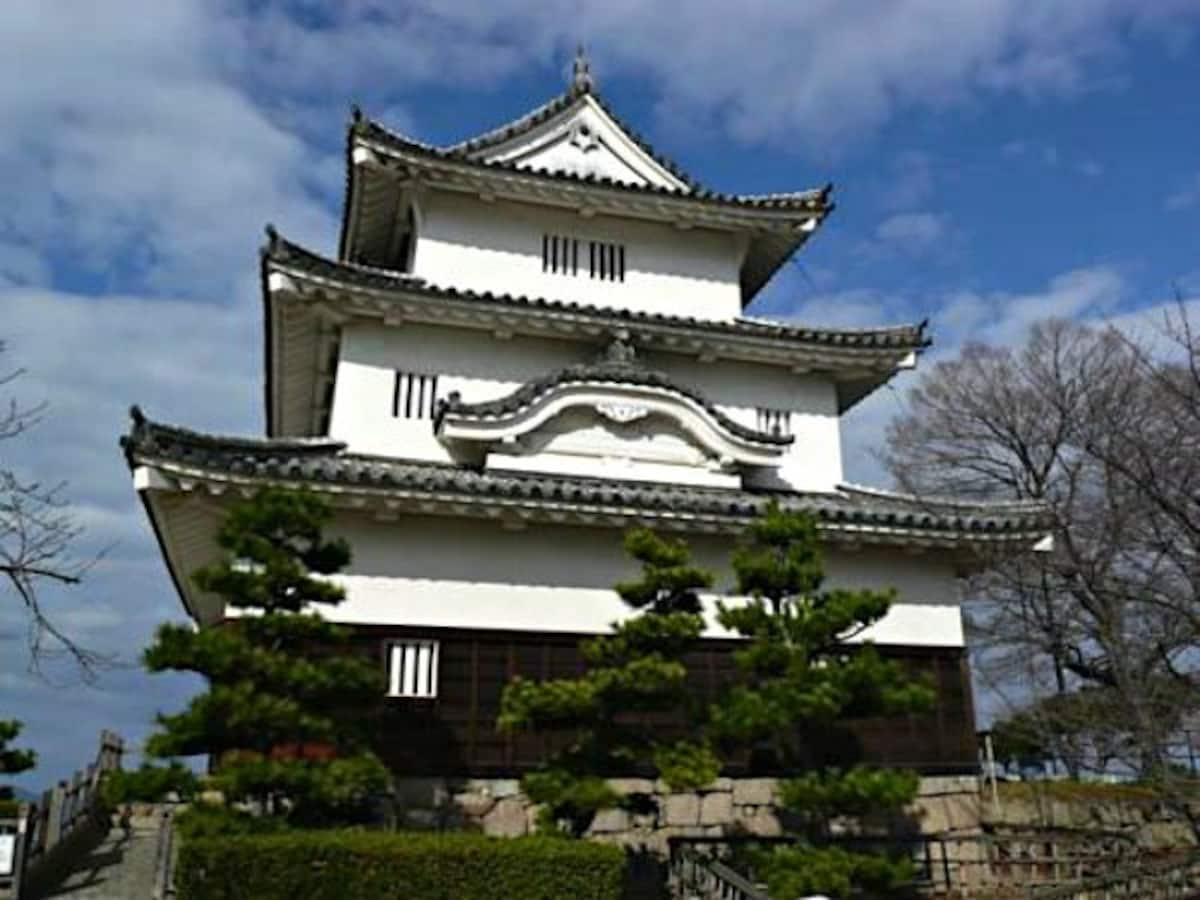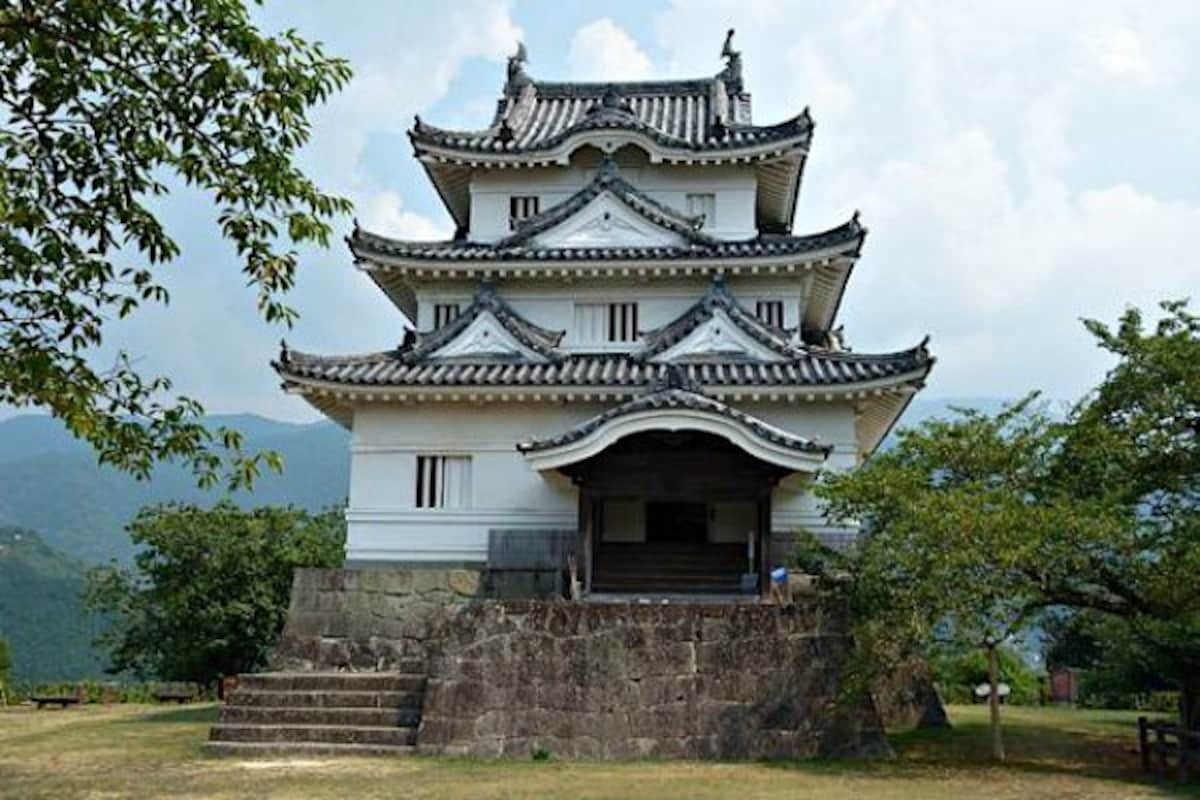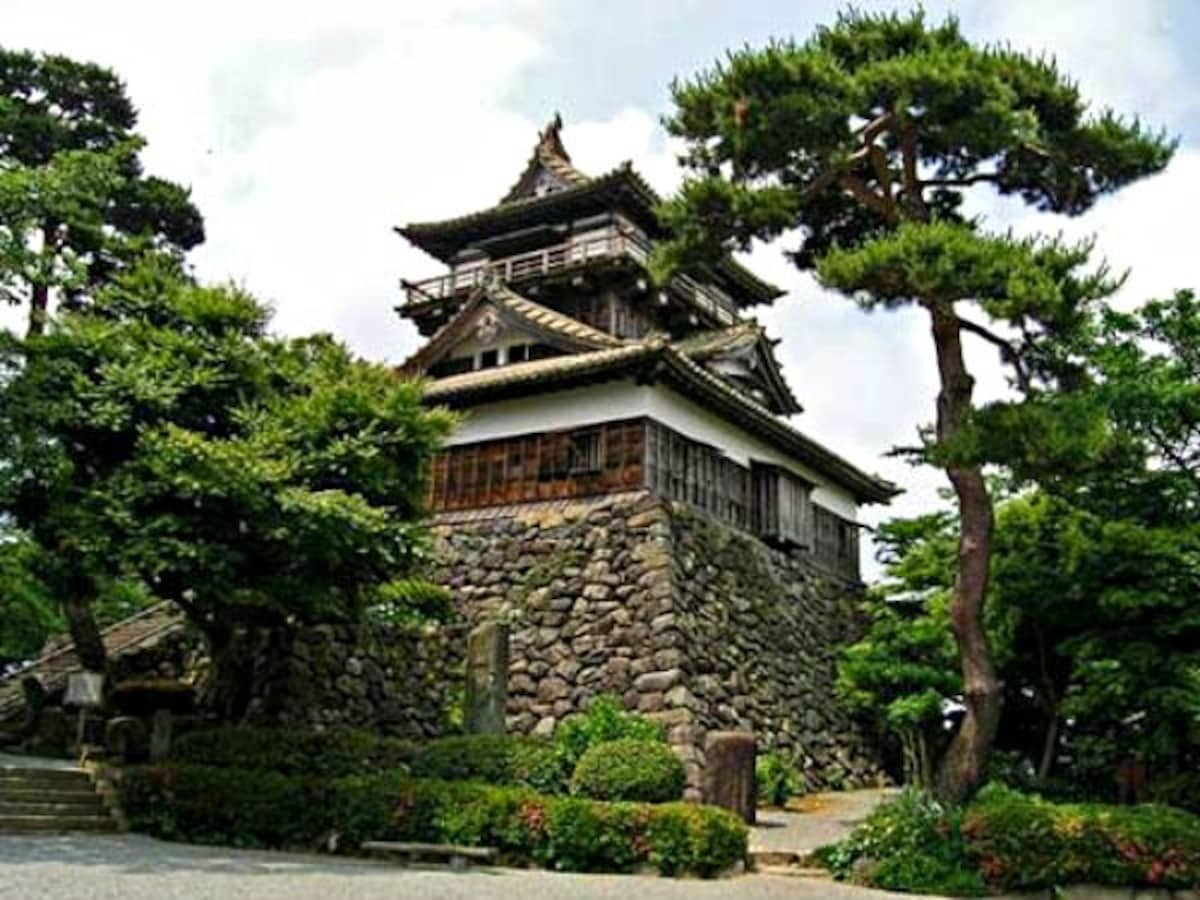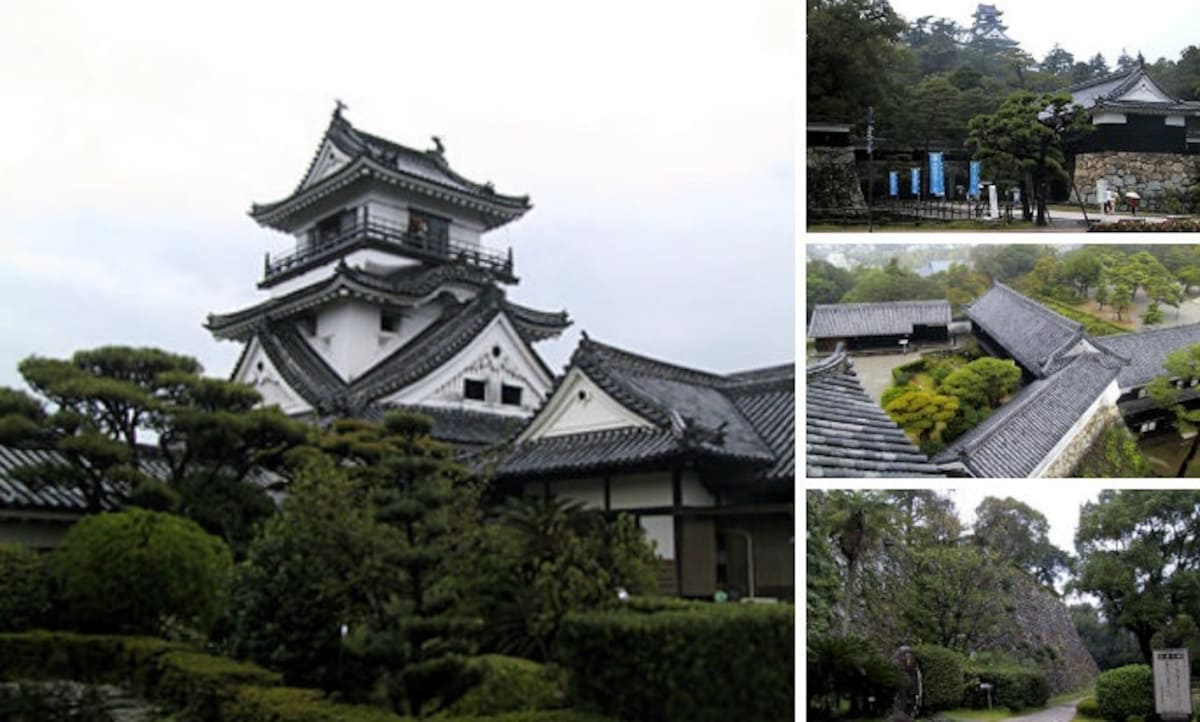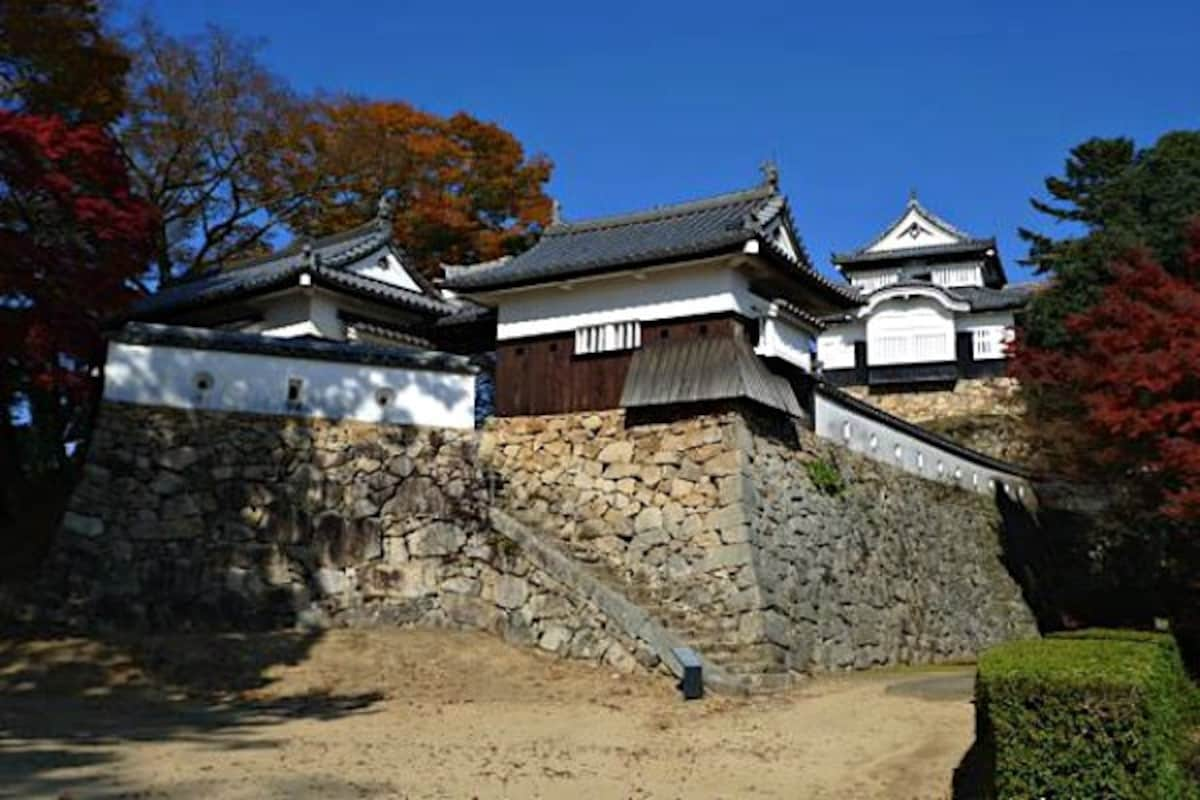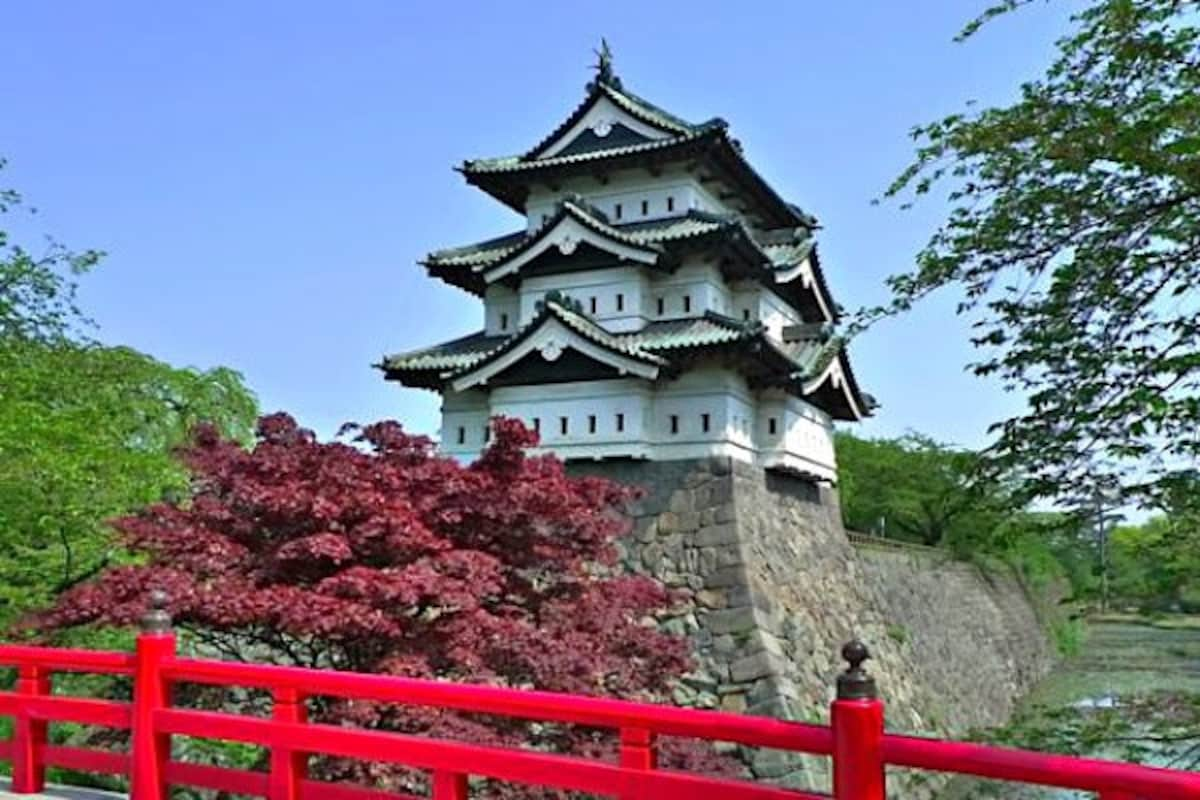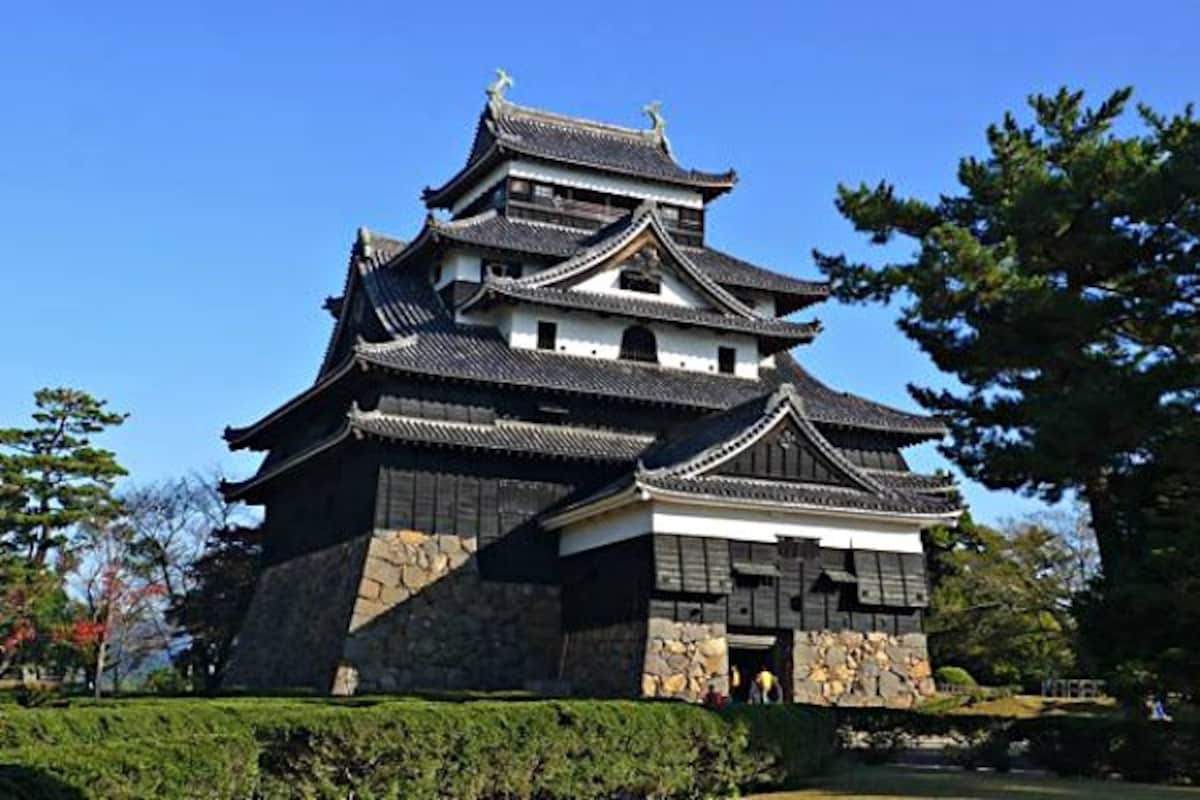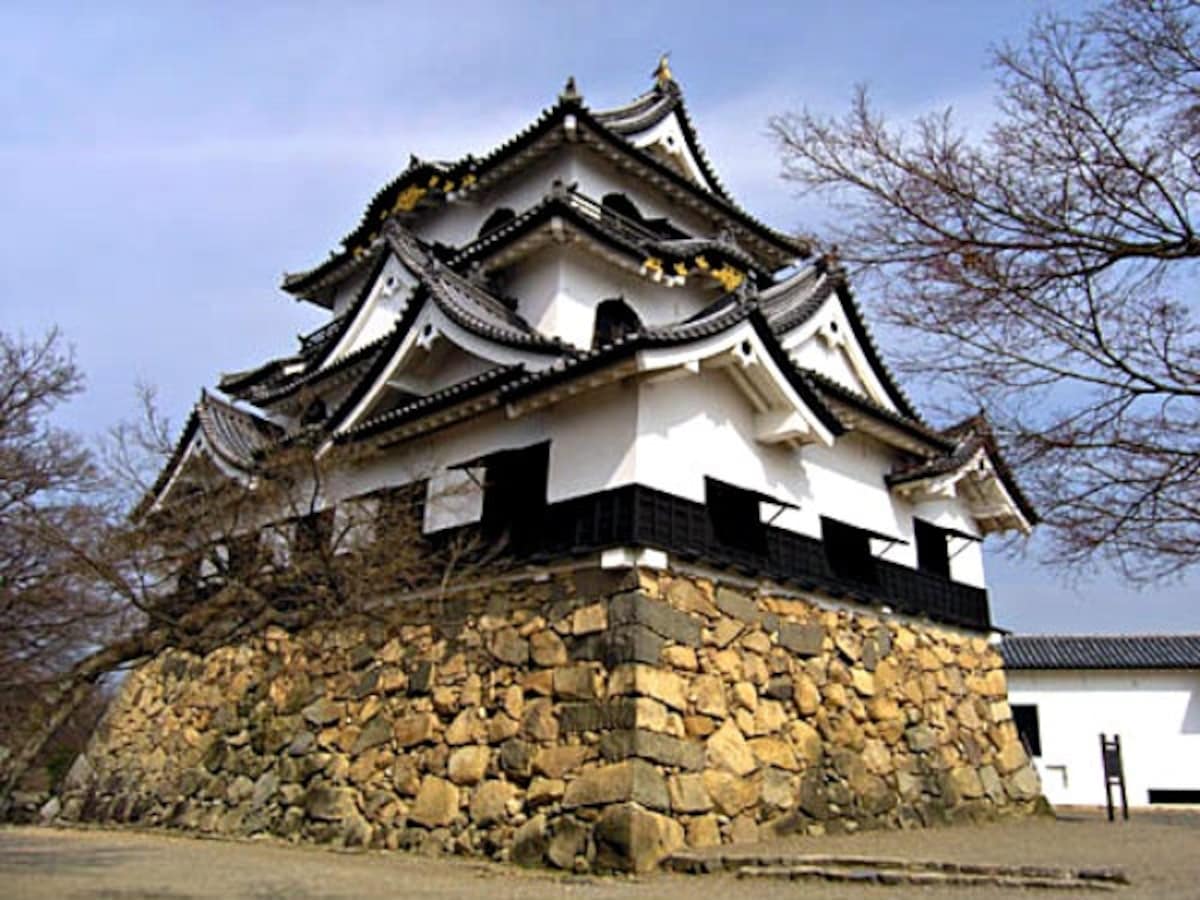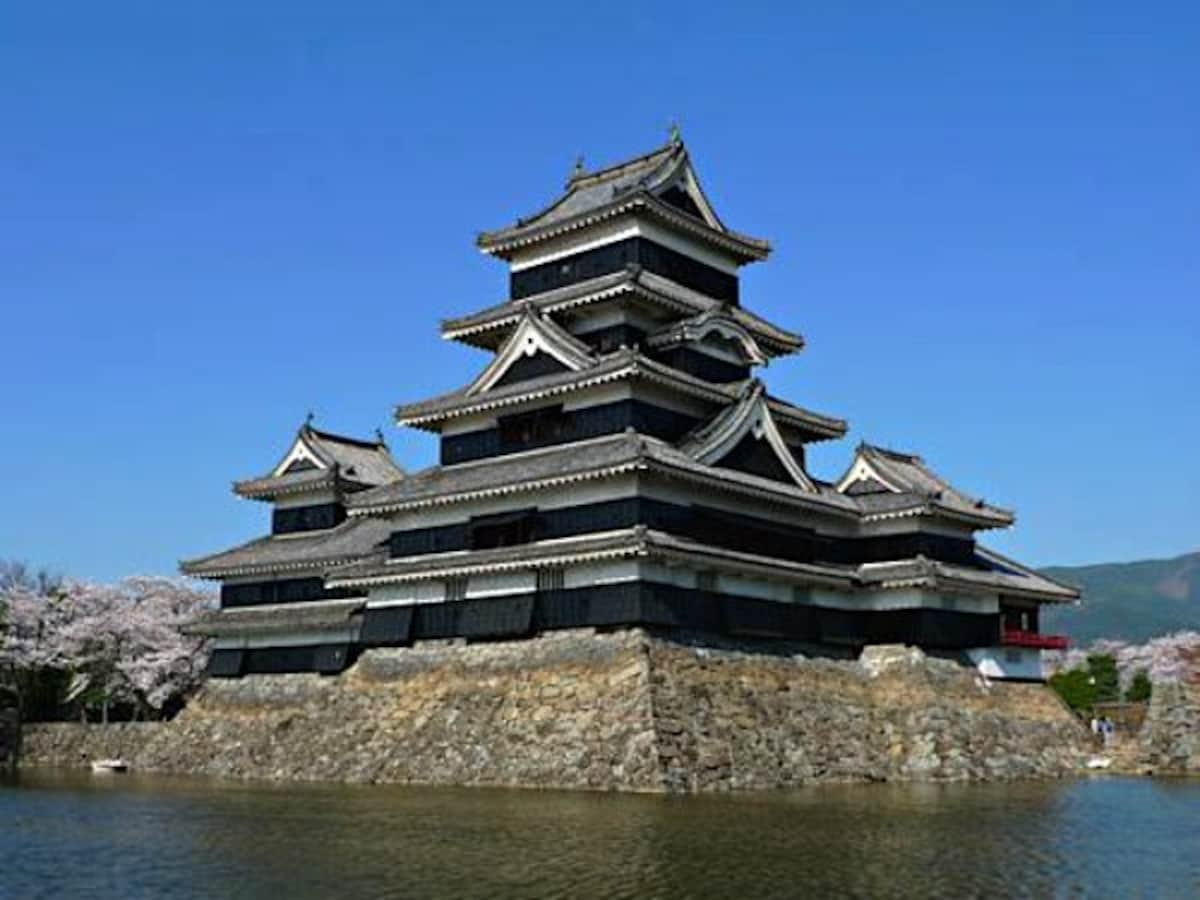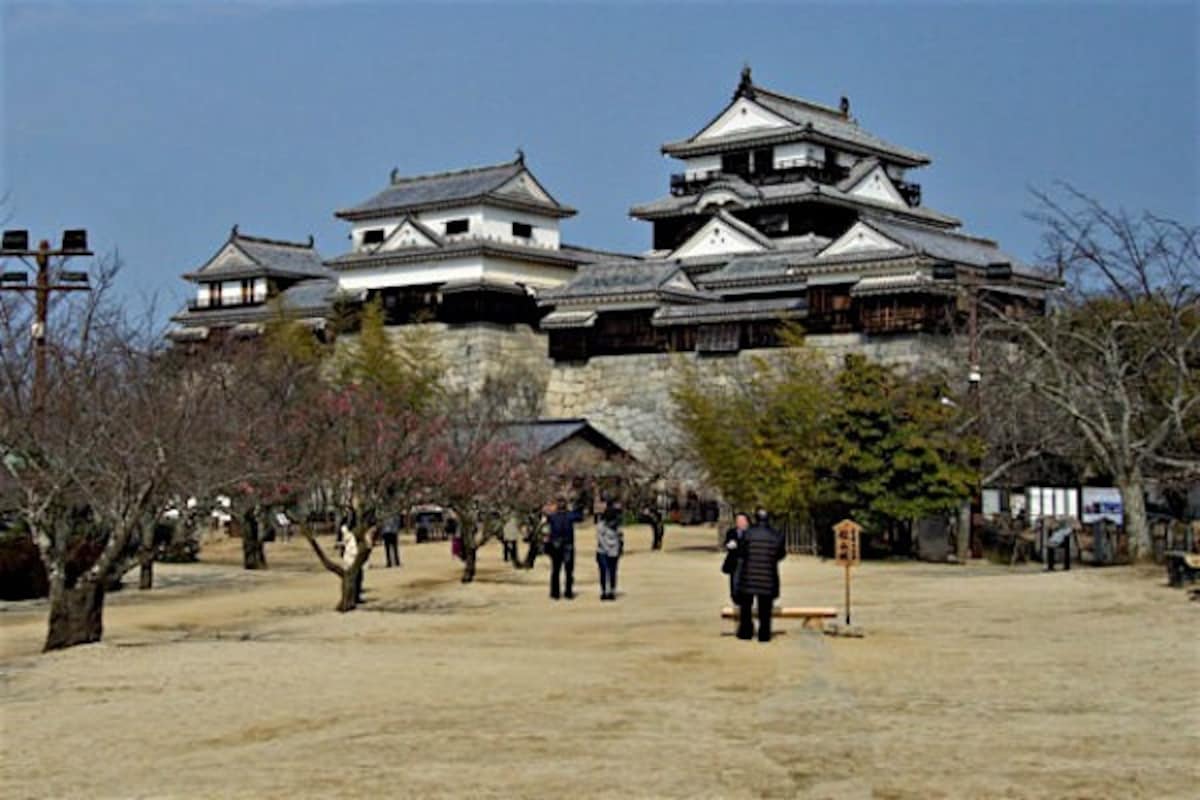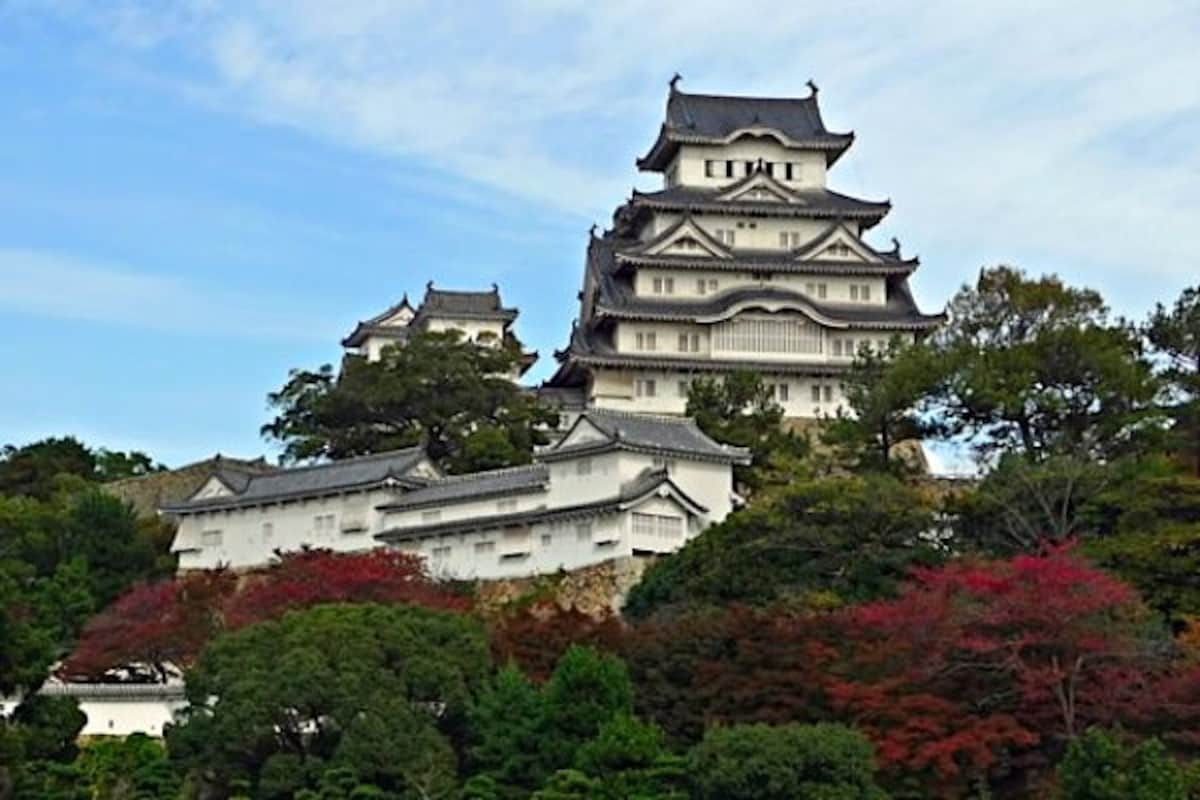List: Japan's 12 Original-Construction Castles
While Japan is home to over 300 castles, there are only 12 that still retain their original castle keep. The other castles only claim original outlying buildings, often with a recently reconstructed keep, and many more are simply ruins. Surviving the test of time, these 12 so-called "original construction" castles are the cream of the crop.
By Jcastle12. Marugame Castle (Marugame City, Kagawa, ☆☆☆☆)
Ikoma Chikamasa, the lord of the Sanuki area (present-day Kagawa Prefecture), originally ruled from Takamatsu Castle. While there, he built and moved to Marugame Castle, placing his son in charge of Takamatsu Castle.
Marugame Castle was decommissioned as part of the Tokugawa's 1615 law allowing only one castle per lord per domain.
Marugame Castle was resurrected in 1641 when Yamazaki Ieharu was granted the small fief in western Sanuki. He rebuilt the castle into what we see today, and developed the surrounding castle town of Marugame.
11. Uwajima Castle (Uwajima City, Ehime, ☆☆☆☆)
Todo Takatora built this castle after being granted the small fiefdom around it by Toyotomi Hideyoshi in 1595. After the Battle of Sekigahara (1600), Todo Takatora moved to Imabari, leaving it in the hands of Tomita Nobutaka.
From 1615 until the Meiji Restoration (1868), Uwajima Castle was ruled by Date Hidemune and his descendants. The basic territory and layout of the castle did not change from the time of Takatora, but the Date completed the fortifications with yagura (towers), gates and stone walls.
10. Maruoka Castle (Sakai City, Fukui, ☆☆☆☆)
Maruoka Castle was built by Shibata Katsutoyo, adopted nephew of Shibata Katsuie, in 1576. The castle had 17 lords until the Meiji Restoration, including Aoyama Shurinsuke, Honda Narishige and Arima Kiyosumi.
The keep was leveled by the Fukui earthquake of 1948, but the keep was rebuilt using 80 percent of the original materials in 1955.
The keep has three stories, with a wooden interior and stone-tiled roof, and is located on a hill in the middle of a rather large plain. Both the size of the keep and interior are very similar to that of Inuyama Castle.
At the bottom of the hill there's a small history museum with displays related to the lords of Maruoka Castle (admission included with castle ticket). Maruoka Castle's keep is generally considered to be in its "original" state, making it the oldest remaining keep in Japan. It is designated Important Cultural Property.
9. Kochi Castle (Kochi City, Kochi, ☆☆☆☆)
Yamanouchi Kazutoyo began the construction of Kochi castle in 1601 after he was stationed in the Tosa region (present-day Kochi Prefecture on the island of Shikoku). Originally he resided in Urado Castle, but decided to build a new castle in the current location.
Yamanouchi moved in two years later after the main keep and main structures were finished. The whole castle was completed in 1611.
Much of the castle, including the main keep, was burned to the ground in a great fire that broke out in the castle town in 1727. The current main keep dates from this reconstruction, which was completed in 1748. It took to 1753 until all of the castle was completely rebuilt.
One of the rarest aspects of this castle is that all the structures from the original honmaru (inner bailey) remain.
This is a really great castle. The warmer more tropical-style climate of Kochi results in the castle having a great deal of vegetation growing everywhere. Exhibits inside the castle show that it was in a terrible state of neglect until it was repaired between 1948 and 1959.
8. Inuyama Castle (Inuyama City, Aichi, ☆☆☆☆)
The castle as it stands today was established in 1537 by Oda Nobunaga's uncle, Oda Nobuyasu.
According to a Heian-Period (794-1185) book called the Enkishiki, at the site where Inuyama Castle now stands there was once a shrine called Harigane Shrine (Harigane Jinja). This shrine was later moved to Shirayamadaira to make way for the castle.
The castle was not entirely constructed from scratch, but the main keep was actually moved here from a different castle known as Kanayama Castle.
After Toyotomi Hideyoshi took Odawara, he stationed Ishikawa Sadakiyo at Inuyama Castle. Following the Battle of Sekigahara, Ishikawa was defeated and Matsudaira Tadayoshi (master of Kiyosu Castle) stationed his retainer Ogasawara Yoshitsugu in Inuyama Castle. In 1616, Ogasawara was replaced by Naruse Masanari and his family have more-or-less owned the castle through to the present day.
Inuyama Castle was famous for being the only privately owned castle in Japan. It had a few different owners early on, and was seized by the Meiji government, who held it in their possession from 1872 to 1895. It suffered damage during an earthquake in 1891 and was returned to the Naruse family in 1895 under the condition that they repair the damages continue to keep up the castle into the future. In 2004, the castle's ownership was passed to an incorporated foundation (which was still headed by the Naruse family), but this became a public interest incorporated foundation in 2013.
This is a great little castle to visit if you're in the area and have some time. It's also not far from Gifu and Nagoya Castles, so you could go to two sites in the same day. If you're really ambitious, you might be able to make it to all three.
7. Bitchu Matsuyama Castle (Takahashi City, Okayama, ☆☆☆☆☆)
Bitchu Matsuyama Castle is well know as being the highest-altitude castle in Japan, located at a height of 480 meters (1,575 ft) above sea level. This was viewed as a strategic location, and valuable territory for a castle.
Akiba Shigenobu built the first castle on a nearby mountain in the year 1240. In 1331, Takahashi Muneyasu built the first Matsuyama Castle on this site.
The main keep and yagura (turrets) you see today were built by Mizunoya Katsutaka in 1683. This was one of very few two-level main keeps, but being on top of the mountain, there was little need to build a high vantage point. After the Mizunoya Clan, there were several different lords until Itakura Katsuyoshi took conrol in 1744. His descendants continued to rule the site until the Meiji Restoration in 1868.
Bitchu Matsuyama is a fairly small castle with only a few buildings, but the great stone walls and views make this a five-star site.
6. Hirosaki Castle (Hirosaki City, Aomori, ☆☆☆☆☆)
Oura Tamenobu was awarded the area around Hirosaki for his loyalty to Toyotomi Hideyoshi during the Siege of Odawara (1590). He changed his name to to Tsugaru and started work on Hirosaki Castle in 1603.
He died in 1604, and work on the castle was put on hold until his son, Tsugaru Nobuhira, restarted it in 1609. He finished the castle in just one year by cannibalizing materials from Horikoshi Castle and Oura Castle.
The three-level main keep of Hirosaki Castle seems disproportionately small when compared to the huge estate encompassed by the castle today. Hirosaki Castle was originally built with a five-level keep, which was struck by lightning and burned to the ground in 1627. The new three-level keep is actually just the renovated Ninomaru Tatsumi Yagura watchtower.
The Tsugaru clan held the castle until the Meiji Restoration, when it was taken over by the government.
Hirosaki Castle has the only extant main keep to the east of Matsumoto Castle, making it a historical treasure of the Tohoku region. Hirosaki Castle is also famous throughout Japan for the more than 2,600 cherry trees that fill its grounds today. Every spring when the trees are in bloom, thousands of visitors flock to the grounds for one of Japan's finest cherry blossom festivals.
Note that as of March 2016, the main keep of Hirosaki Castle has been moved 70 meters from its original position for its first restoration in 100 years. It will be about five years before the keep is moved back, and the entire restoration process is expected to take 10 years.
5. Matsue Castle (Matsue City, Shimane, ☆☆☆☆☆)
Horio Yoshiharu was awarded the lands around Izumo for his participation in the Battle of Sekigahara (1600). After three generations of Horio rule and one of Kyogoku, the castle was passed to one of Tokugawa Ieyasu's grandsons, Matsudaira Naomasa. The Matsudaira ruled for 234 years, until the castle was dismantled during the Meiji Period (1868-1912). Fortunately, the main main keep you see above was saved.
Matsue is a great castle to visit. The main keep is bigger than you expect, and in great condition. It's a marvelous example of a borogata-style main keep. The pictures don't do it justice, but besides the main keep the grounds are quite extensive, with many stone walls and moats.
Just outside the moat on the north side of the castle is the residence of Lafcadio Hearn and an old samurai home that are also worth visiting if you have time.
4. Hikone Castle (Hikone City, Shiga, ☆☆☆☆☆)
For his participation in the Battle of Sekigahara, Ii Naomasa was awarded Sawayama Castle and the surrounding lands. Due to its inconvenient location and poor condition, he soon started planning for a new castle on a new spot that would become Hikone Castle.
Unfortunately, Naomasa died soon after, and the castle was actually begun under his son Naotsugu (also known as Naokatsu). It took 20 years and was completed under Naotsugu's brother, Naotaka, who had become lord of the castle in 1615.
The main keep of Hikone Castle is famous for having used several types of gables and construction techniques to make it well fortified. The main keep and connected yagura (turrets) are designated National Treasures.
The Ii family managed to maintain their rule over Hikone Castle for over 250 years, from the beginning of the Edo Period until the Meiji Restoration.
This is a beautiful castle inside and out with many small, interesting points here and there. Take your time to explore and enjoy it—don't miss the various yagura and gates in a rush to get to the main main keep. With the reconstructed lord's palace and the original gardens on the grounds of this castle, in some ways it demonstrates what a castle was really like even more than Himeji.
3. Matsumoto Castle (Matsumoto City, Nagano, ☆☆☆☆☆)
The history of Matsumoto Castle actually begins with a castle called Fukashi Castle, which was built by Shimadachi Sadanaga in 1504. That castle was attacked and captured by Takeda Shingen in 1550, but after Toyotomi Hideyoshi took Odawara Castle in 1590, he stationed Ishikawa Kazumasa in Matsumoto to govern his eastern provinces.
Built in its current shape by Kazumasa and his son Yasunaga beginning in 1590, Matsumoto Castle is designated a National Treasure.
After Himeji Castle, Matsumoto Castle offers the next best extant castle main keep in Japan.
2. Matsuyama Castle (Matsuyama City, Ehime, ☆☆☆☆☆)
The original castle was built here in 1603 by Kato Yoshiaki. It had a large five-story tenshu (main keep) that was actually moved to Aizu when Kato was transferred there in 1627. Tadachika Gamoh became the new lord of Matsuyama Castle and completed construction of the ninomaru (second bailey) before he died in 1635, leaving no heirs.
In 1635, Matsudaira Sadayuki moved into Matsuyama Castle and the Matsudaira family ruled over the area the end of feudalism.
Sadayuki rebuilt the main keep with three stories in 1642. This main keep was struck by lightning and burned down on New Year's day in 1784. The construction of the current main keep was not begun until 1820, and not completed until 1854. From 1926 on, many of the yagura (turrets), gates and other structures were destroyed by arson and bombings in World War II.
As a relative of the Tokugawa shogun, Matsudaira Sadaaki naturally fought on behalf of the Tokugawa Shogunate in several battles at the time of the Meiji Restoration (1868). Once the emperor regained political power, Sadaaki was a wanted man and considered an enemy of the emperor. In order to avoid attack, he decided to submit and allow imperial soldiers into the castle while he sought penance and refuge in Joshinji Temple in Matsuyama. His sincerity was accepted, and thus Sadaaki and Matsuyama Castle were saved from attack.
The Matsudaira family eventually gave the castle to the city of Matsuyama in 1923. The city has been working since 1966 to repair the original structures and rebuild those that were destroyed.
This is one of the best castles in the country to visit—a very close second to Himeji. The bare wooden exterior is unique among most castles, and gives the whole structure a more historic feel.
1. Himeji Castle (Himeji City, Hyogo, ☆☆☆☆☆)
Toyotomi Hideyoshi first built a small castle on this site for his campaigns in western Japan from 1577 to 1580. You can still see some of the remnants of Hideyoshi's castle in Himeji castle, as Ikeda incorporated some of the stone walls into his castle.
Ikeda Terumasa, an ally of Tokugawa Ieyasu at the Battle of Sekigahara, was awarded Harima Province (present-day southwestern Hyogo) in thanks for his alliance during the war. Terumasa built the main keep of Himeji Castle and erected it as it is known today.
Himeji Castle's nickname, Shirasagi-jo means "White Heron Castle," because the main keep with its three smaller towers resembles a white heron. Himeji Castle was granted World Heritage status by UNESCO in 1993.
Himeji Castle is the most spectacular example of a Japanese castle in existence. The beauty of the main keep is unrivaled throughout Japan, and the extent of surviving structures is amazing. Even for someone who's not particularly interested in castles or history, a trip to Himeji Castle is fascinating. This can be a half-day side trip on the way to Hiroshima, or a short day trip from Osaka or Kyoto.


